wrestling / Columns
The Magnificent Seven: The Top 7 Switch Hitters on the National Stage
Wrestling has its natural heels and its natural faces. Consider acts like Dusty Rhodes and Ricky Steamboat—guys whose charisma or propensity for selling made them most at home as good guys. Contrast them with the likes of Randy Orton or Big Van Vader—guys who had their face runs, but who so few of us would argue were more successful when they worked for the powers of good.
Rarer are those talents who have enjoyed comparable levels of success as faces and as heels—the guys I’m labeling as switchhitters for the purposes of this column who were great heroes and great villains at different points in their careers. This week, I’m looking back at the seven best talents to pull off both roles on a national stage.

#7. Bob Backlund
From the 1970s into the early 1980s, Bob Backlund was the embodiment of the whitemeat babyface—a bright-eyed, clean-cut, technical wrestler who always did the right thing and maintained a clean image. He never had quite the magnetic quality of a Bruno Sammartino, or the charisma of a Hulk Hogan, but as a bridge between eras, he was perfectly serviceable as the face of the company and a surefire Hall of Fame level talent.
The idea of Backlund as a heel didn’t sound like it would click. He didn’t have a monster look, nor the personality to function as an arrogant Ric Flair-style heel. And yet, against all odds, in the fall of 1994, he discovered a heel character that was not only well-played, but quite arguably ahead of its time. After suffering a clean pinfall loss to Bret Hart, Backlund snapped, attacking The Hitman and locking him into the Crossface Chickenwing.
In the months to follow, Backlund mastered the art of the crazed heel. As good as he had been as a heel for the overwhelming majority of his career, this heel work, north of forty, was arguably the very best of Backlund’s whole career. The WWF went so far as to book the shockingly successful character into a short-term world title run (albeit, ostensibly, just to transition the title from Hart to Diesel).
In the years to follow, crazy old man Backlund would function as less of main event menace, more as comic character, making a faux bid for the US Presidency, later backing Kurt Angle, and then making sporadic cameos in his crazy old man gimmick. As such, like so many truly great heel characters, the heel mannerisms evolved into an endearing, beloved part of wrestling, bringing the man and his character full circle, back to popularity and de facto face status.
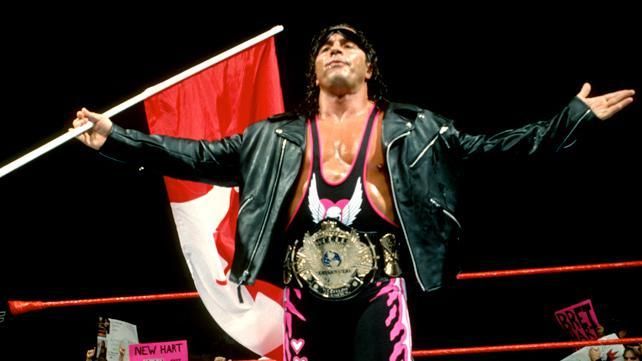
#6. Bret Hart
As much as I’m a mark for Bret Hart, I don’t think it’s unfair to say that his initial heel work as part of the Hart Foundation was a bit vanilla—in the rudimentary stages of his mic game, he was a mechanic teamed with a more charismatic big man, aligned with Jimmy Hart, that tended to cheat and thus were heels.
Boy did Hart evolve.
The man and his character found their footing when he turned face, and particularly when he got his singles run, including two reigns as IC champ, and finaly a world title push. In the mid-1990s, Hart established himself as an old school, noble fighting champion—confident without being arrogant, gifted as a technician, medium-sized, and a near perfect counterpoint to the Hulk Hogans and Ultimate Warriors of the world, to delineate the start of a new era.
And then he turned heel.
Times change, and on the cusp of Attitude, fans wearied of Hart’s model citizenry, in favor of guys like Steve Austin with bigger, brasher personalities. At this juncture, Hart let his pride in himself, his family, and his native country bleed into full-on douche-baggery on each topic. As the old adage goes, the best characters are real people with the volume turned up, and this was Hart showing more personality than ever before and in a wildly successful angle, had Candian audiences eating out of his hand while he became biggest heel in the USA.
Despite being misused and underutilized in WCW, Hart had his spots there, too. He came in as a champion of justice and conscience of a promotion that had spun out of control. Moreover, as he settled into a heel turn, he had some truly great moments—wearing a metal shield beneath his hockey jersey to protect himself from Goldberg’s spear, and infamously putting over El Dandy as the competitor most worthy of a shot at his world title.
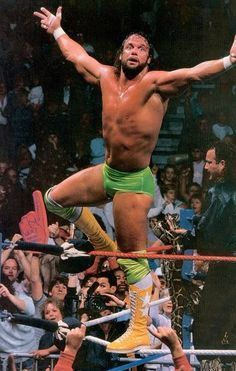
#5. Randy Savage
Few wrestlers have ever played intense at quite the level of Randy Savage. The man and his character were always passionate in the ring and on promos and it’s a dynamic that I woud argue was equally success ful for The Macho Man as a face and as a heel.
When he wrestled for the forces of good, Savage was more often than not a wild-eyed defender of something good, defending his right to exist in the main event scene against Ted Dibiase and Andre the Giant; defending Miss Elizabeth against Jake Roberts and Ric Flair; defending his father, Angelo Poffo, against Flair in WCW.
And when Savage turned heel, part of the reason it worked was how justifiable and understandable the turns were. When he went heel on Hulk Hogan, his jealousy and protectiveness over Miss Elizabeth was something fans could immediately identify with, even when they saw that he was taking things too far. Similarly, the nWo was dominant enough over WCW that it was reasonable for anyone to want to join that side; but Savage’s truest colors shined through when he entered an internal power struggle with Hogan to revisit their old animosities about who was the better man and more worthy top dog.
Savage’s inherently wild quality made him an unpredictable joy to watch as a face and an erratic mad man as a heel. In either role, he was one of the very best of all time.
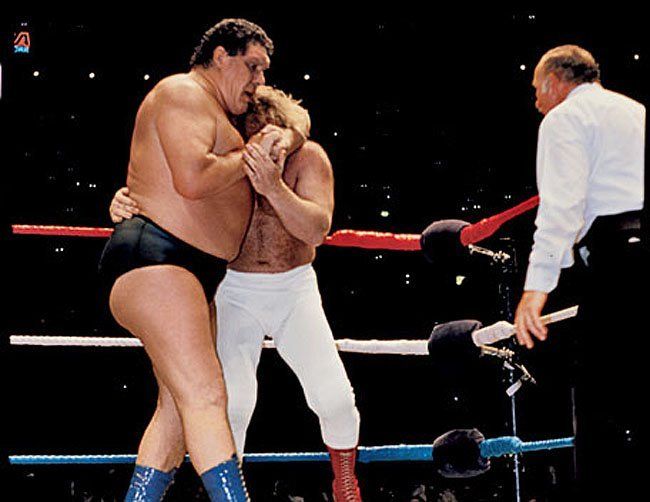
#4. Andre the Giant
As a child of the 1980s, I look back at Andre the Giant as one of wrestling’s all-time great, definitive heels. He was the single most insurmountable challenge for Hulk Hogan to overcome, bigger than The Hulkster by every dimension, with an aura of invincibility and a conniving manager in one Bobby Heenan to make him loathsome, beastly, and perhaps most importantly believable as the man who might take the world title off Hogan (and, heck, he did technically do so via the original Earl Hebner screwjob).
After a year and change of feuding with Hogan and Randy Savage at the top of the card, Andre receded to upper mid-card status, engaging in programs with The Ultimate Warrior and Jake Roberts, then teaming up with Haku. He would ultimately end his days as a face when he walked away from Bobby Heenan and later became cannon fodder for rising super heavyweight Earthquake. He was good in that role of the aging icon—immediately recognizable and likeable.
And it’s little wonder that Andre’s final face run was a success. After all, my five-year-old self wasn’t really conscious of Andre’s longevity as a face, but the guy was an equally if not more iconic good guy long before he played the villain. In the territory days, he roamed from place to place consistently playing cavalry for hitherto overwhelmed faces, or stepping in as a surprise challenger to a territory’s heel top dog. It’s probably fair to say that no one ever had a longer, more successful career with less championship recognition, than Andre for the simple reason that he didn’t need it. Andre was a physical spectacle with the charisma and skill to use his natural gifts to the fullest and play the part of the friendly (and then evil) giant so well that he was somehow always a serious world title threat, despite only ever actually holding the strap for a few days under the most dubious of terms.
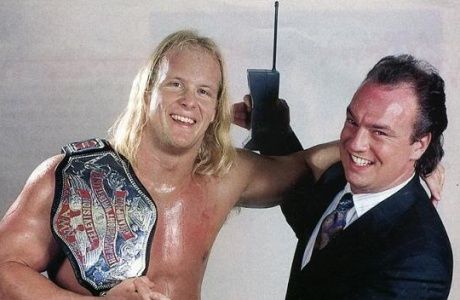
#3. Steve Austin
Objectively speaking, Steve Austin should have gone down as one of the greatest heels of all time.
As Stunning Steve Austin, his quick tongue on promos, paired with a vicious streak and blistering pace in the ring set him up something of an heir apparent to men like Ric Flair. However, just as the years dawned when men like Austin, Dustin Rhodes and William Regal may have ascended to the main event level, WCW had a paradigm shift upon the arrival of Hulk Hogan, and lost interest in most of its homegrown projects.
Austin moved on to the WWF, by way of ECW, where despite a middling gimmick as The Ringmaster, he again distinguished himself via exceptional in-ring work. Moreover, he made a critical adjustment from brash and cocky to that much more ruthless and unemotional when he transitioned to the Stone Cold moniker.
And he caught fire.
Stone Cold evolved from a self-employed mercenary to a reckless redneck rebel and connected with fans on a level that few if any wrestler had before or would since. He developed such momentum that the WWF had little choice but to turn him anti-hero face, and embrace the man who would become one of the most successful faces of the company ever.
I don’t know that anyone would argue against Stone Cold’s place as one of the top five greatest faces of all time. It’s a shame that that assessment comes at the expense of his years of phenomenal work as an upper-mid-card heel, not to mention his heel run with The Two Man Power Trip and atop The Alliance. Sure, the angles didn’t live up to their potential, and the fans never really hated Austin because they still wanted to cheer him. Just the same, watch Austin’s work from this era in a vacuum—see him brutalizing the Hardys and Lita, cowering from The Undertaker, generating comedic gold backstage with Kurt Angle—and I’d argue that there have been few guys better at playing the main event heel. It’s a shame that he was too over as a face to ever generate enough organic heat for that character to thrive, because it’s clear Austin was having a ball and doing some of the finest work of his career.
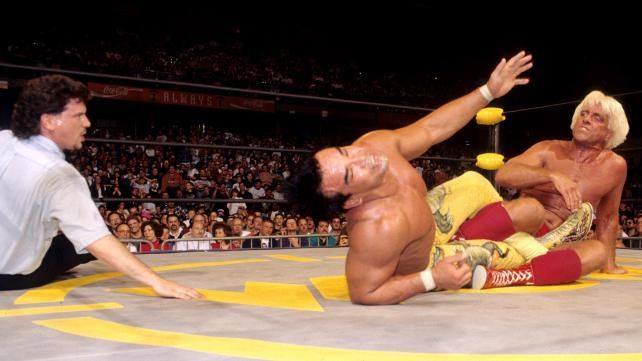
#2. Ric Flair
Make no mistake about it, The Dirtiest Player in the Game was objectively better as a heel than he ever was as a face. As an arrogant, conniving, cowardly, womanizing villain, he did a magnificent job of drawing heat. Moreover, he functioned as the prototypical NWA traveling world champ who always seemed beatable, could go the distance in broadways from night to night, and put on objectively good matches in the process with just about any top face from any territory. He did some good face work as well during this era, but always seemed most at home as a bad guy.
All that said, something magical happened in the later stages of Ric Flair’s career. I’d argue that it started in 1993, when he beat Big Van Vader for the WCW World Championship at Starrcade, playing the role of the battered old veteran looking for one more shot at glory. Though Flair would have heel runs afterward, I felt the fans could never truly bring themselves to hate him after that point, as he was such an iconic institution that the fans loved him regardless of his face-heel orientation. In the years to follow, each reassemblage of the Four Horsemen was a tremendous nostalgia trip, and despite backstage political problems, he remained quite arguably the most reliable face of the company behind only Sting and Hulk Hogan.
While Flair did some heel work in WWE and later TNA over the decade to follow WCW closing down, he remained irresistible to the fans who kept forcing face turns upon the character, culminating in The Nature Boy’s last big run in the build to WrestleMania 24, when he repeatedly put his career on the line along entertaining mini-programs with Vince McMahon, Mr. Kennedy, MVP, and a host of others before finally setting the stage for an iconic face-face showdown with Shawn Michaels.
When someone is as good as Ric Flair for as long as he was around, it’s hard for fans to hate him. He’s one of wrestling’s all-time great heels, but evolved into one of the business’s best, most universally loved faces.

#1. Hulk Hogan
As much as the IWC will hate on his work rate and the fact that so many of his face mannerisms were actually kind of heelish (biting, raking eyes, flexing and posing incessantly), for those of us who grew up in the era of Hulkamania, there is no question that Hulk Hogan was the greatest face of all time. He was the ultimate hero, battling back giants, defending his country, avenging slights and injuries to his friends. Hogan had a magnetic charisma, a killer look, and a promo style that made fans believe in him.
By by the mid-1990s, so much of the magic had worn away.
Hogan’s 1993 WWF run garnered a mixed and lukewarm response. Moreover, his first years in WCW came off as a pale imitation of the original Hulkster act from the WWF—dated, and an ill fit for the hitherto more technically driven and realistic WCW style. But then the unthinkable happened—he turned heel.
Hogan capitalized on all of that organic heat and channeled it toward the Hollywood Hogan character, moreover behaving in overtly heelish ways—whipping innocent people with his weight belt, and spray painting people with the nWo initials to further establish the character as detestable. I’d argue that, for the first year and a half of the nWo run, Hogan emerged as the single most magnetic, best-drawing heel character of a generation.
Hogan’s heel schtick would grow old, too, leading to nostalgia runs as a face in WCW—a cycle that repeated itself in WWE as well. Just the same, for the moments when he really hit, wrestling has known no greater face and very few greater heels than Hulk Hogan.
Which switchhitters would you add to this list? Jerry Lawler, Mick Foley, Shawn Michaels, and The Undertaker were among my top runners up. Let us know what you think in the comments section.
Read more from Mike Chin at his website and follow him on Twitter @miketchin.







